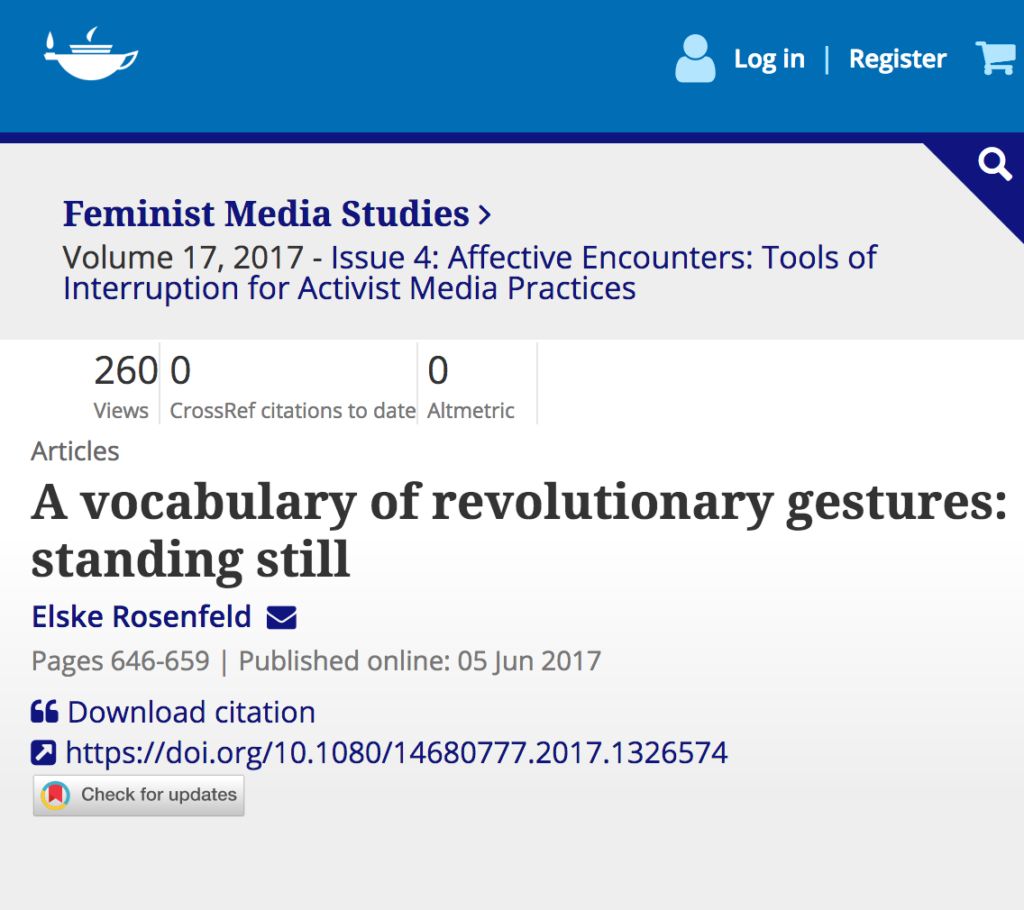A contribution to:
Feminist Media Studies
Volume 17, 2017 – Issue 4: Affective Encounters: Tools of Interruption for Activist Media Practices
ABSTRACT
The following text is part of a body of textual and artistic research into how instances of political change or upheaval affect and manifest in and between bodies, and how they persist there after such events are declared irrelevant or failed. “Standing still” is interrogated as a gesture that thwarts a concept of emancipation as linear progress in time, which is shared by both the capitalist and state-socialist modernities of the twentieth century. In the late 1980s, a sense of stasis engendered dissident aesthetic–political practices of slowness or standstill. These enabled the unity of artist and worker demanded by Socialist Realism and coveted by the avant-gardes—but at the expense of a future that could be known. Untethered from such a future, the revolutions from 1989 onwards, too, have become practices of being together in standing still. At Gezi, the Standing Man slotted his gesture with utter precision into the context of an existing present that rendered it politically meaningful. But “to stand still” is not the opposite of “to move.” This essay explores how stillness and its potential to act and counteract becomes the property of each moment of even the most un-revolutionary everyday.
